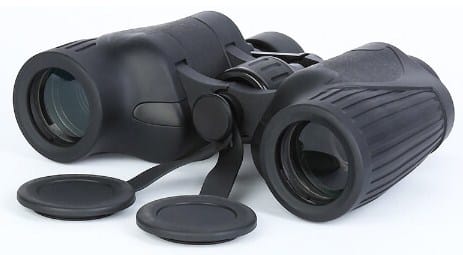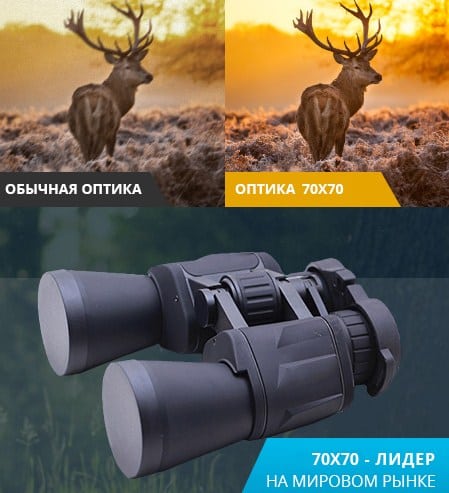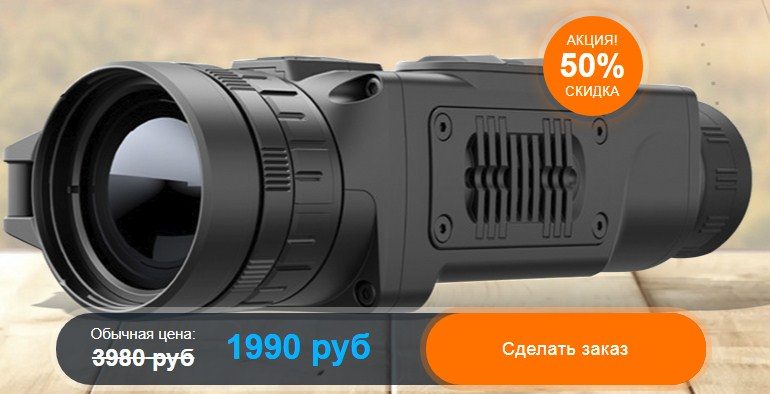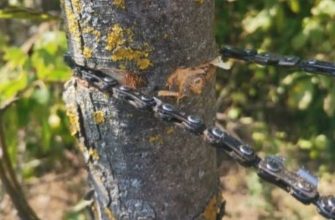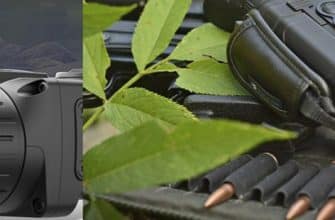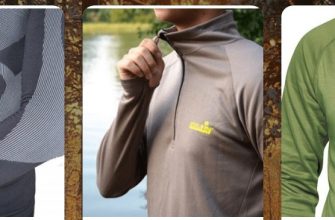Binoculars are not often considered an essential fishing tool, but they can be just as useful for anglers on the water as they are for hunters in the woods.
- What are binoculars and why do you need them for fishing
- TOP of the most powerful and modern binoculars that will come in handy for fishing and hunting
- Binoculars, including for fishing and hunting
- Binocular classifications – which models are suitable for camping fishing conditions
- Focusing
- compactness
- Technical application in different conditions
- What characteristics to look for when choosing binoculars for anglers
- So, what parameters are important for fishing binoculars
- How to choose digital binoculars for fishing and hunting with photo and video capture mode
- The best models of binoculars for fishing with a description – current offers for purchase in 2022
- Поделиться ссылкой:
What are binoculars and why do you need them for fishing
Binoculars are a fairly small observation device that consists of two identical optical channels, each of which contains an objective lens, a rotation system and an eyepiece, made in the form of two modular tubes – monoculars. Binoculars are used to view distant objects. Common models used today are prism models, in which the image is reversed using a prism system.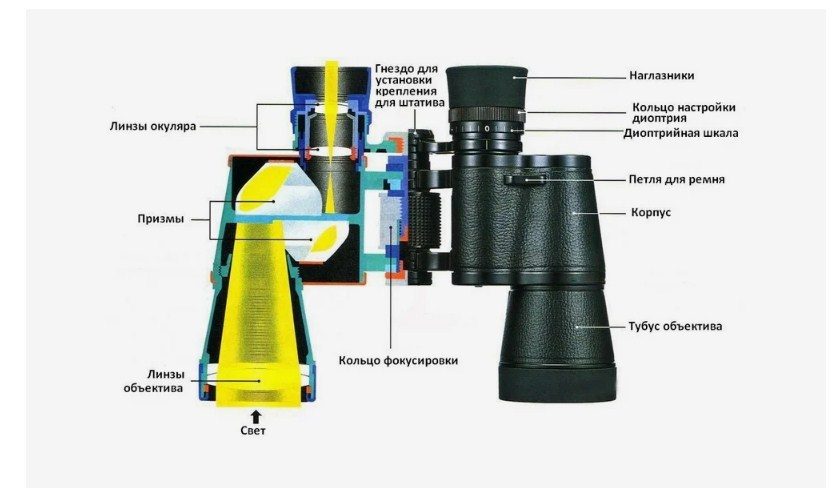
TOP of the most powerful and modern binoculars that will come in handy for fishing and hunting
All binoculars have important advantages for anglers and hunters. Recommended to explore!
| Title with photo | Characteristics |
| Powerful binoculars with 8x magnification were invented specifically for a clear and comfortable inspection of the area even in the most difficult conditions, useful for fishing and hunting. Learn more and benefits. Find out the possibilities, technical characteristics in more detail . | |
ATN BINOX HD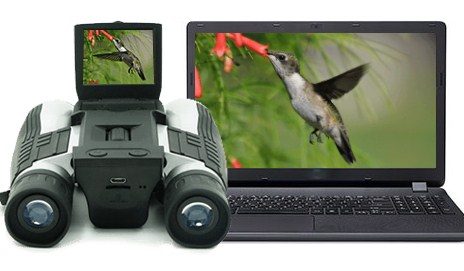 | Thanks to the PROPRO prisms, the binoculars give a bright and clear image. Unlike ROOF prisms, one prism overlaps the other and is rotated 90 degrees to it. Details and technical possibilities. |
Powerful Japanese binoculars for fishing, hunting and nature observation. 70x magnification, manual sharpness adjustment, shockproof and waterproof housing. Now available with a 50% discount and free shipping! Plus a free watch! | |
Bushnell Heavy Duty Compact Monocular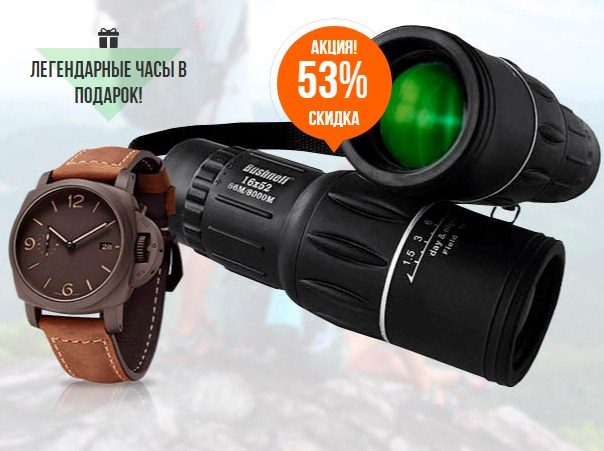 | Compact waterproof monocular indispensable for fishing with a 53% discount! Plus a free watch. |
| Gives hunters the opportunity to find animals, and fishermen perspective fishing spots. Compact and easy to carry. |
Binoculars, including for fishing and hunting
The actual task of the person who uses the binoculars is to identify a distant object. That is why the usual magnification of binoculars used for field observations is 6-8x. Sometimes it is necessary to use a higher magnification. Models with a magnification of 15-20x show their advantages especially well when viewed from a tripod. The binoculars can be equipped with a tripod adapter that allows you to mount it on a tripod. In addition, the weight and size of high magnification binoculars make them unsuitable for long-term transportation. Binoculars with variable magnification (zoom) are also known as pancratic. They have continuously adjustable magnification, similar to the zoom lens of a camera or VCR. The design of these binoculars is more complicated than conventional ones. The next important characteristic is the diameter (in millimeters) of the lens (entrance pupil) of the binoculars. These two parameters are commonly used to define the characteristics of binoculars in the most general terms, let’s say 6×35 means 6x magnification and the lens is 35mm. The lens diameter should be chosen based on the criteria of light fastness, so you should decide on the desired level of brightness. In low light conditions, the lens diameter should be larger. The minimum magnification allows you to see in poorer conditions with the same lens characteristics. Models with 6×30, 7×35 and 8×40 magnification are the most versatile for fishing, hiking, hunting, etc. If you need to closely monitor distant objects in the daytime, binoculars with 8-10x magnification and 30-40 lenses are suitable. If you need to observe in low light, at dusk or dawn, choose the larger diameter.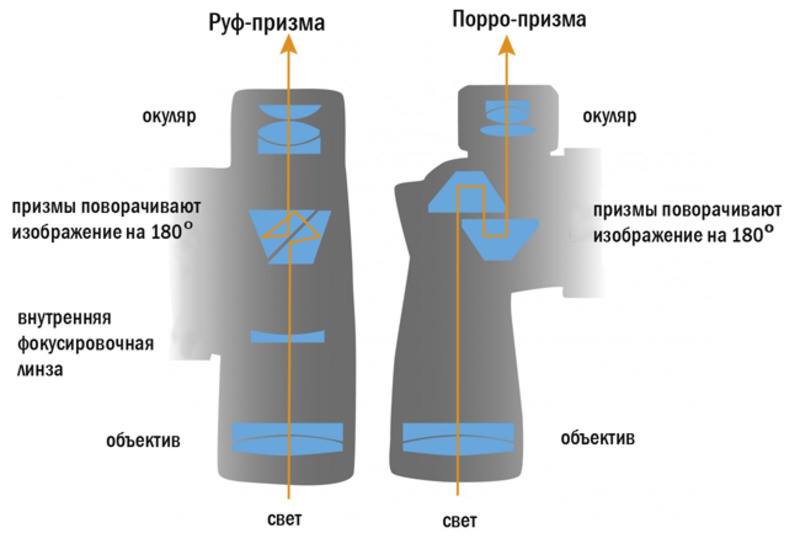
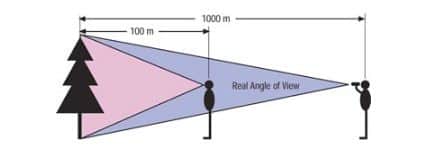
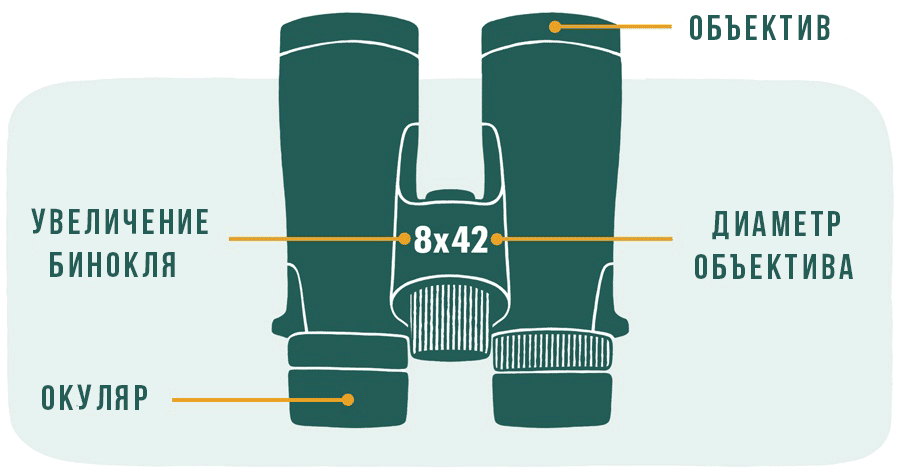
Pupil distance refers to the distance at which binoculars can focus clearly. At a distance of 18-20 mm for vision, you can use glasses or, say, a gas mask. In a conventional model, this distance is 10-12 mm.
Binocular classifications – which models are suitable for camping fishing conditions
Focusing
Binoculars can be divided into two types depending on their focusing: center focus and split focus. The former are focused by a central screw and have a unique focusing mechanism in a single eyepiece. The latter are characterized by the fact that each eyepiece has its own focusing mechanism.
compactness
Depending on the size, binoculars are divided into compact (with fixed and variable magnification) and classic (with fixed and variable magnification). Compact binoculars, as the name suggests, are much lighter and smaller than conventional binoculars. Often they are recommended to fishermen, hunters and tourists. On the other hand, classic binoculars are suitable for a wide range of uses, including hunting, fishing, birdwatching, wildlife and sporting events.
Technical application in different conditions
The following classification is based on technical application and is the most important. These are magnification, incident lens diameter, exit pupil diameter, aperture ratio and field of view. Theater binoculars are designed to observe objects located close to the observer. Usually they are characterized by low magnification (2.5x-5x), wide field of view, high aperture ratio and relatively small size and weight. Small binoculars are also small and light, but provide high magnification. Due to the small diameter of the incident lens, the ratio of the exit pupil to the aperture is small. Suitable for short periods of observation in clear weather.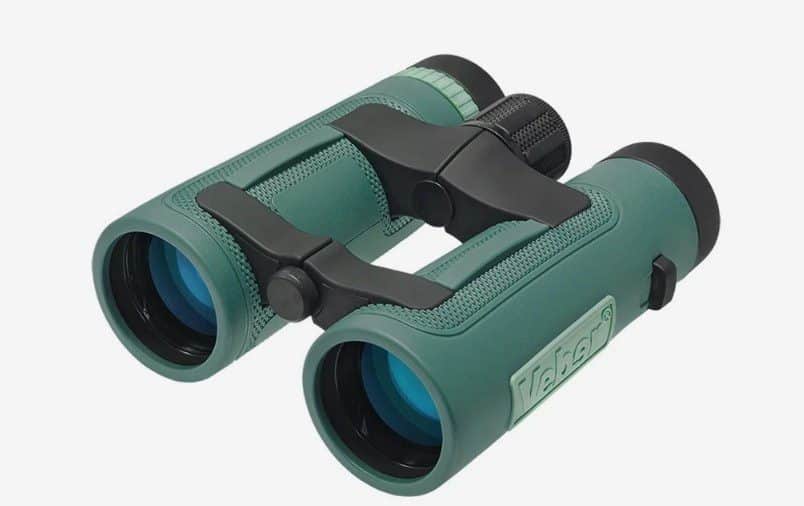
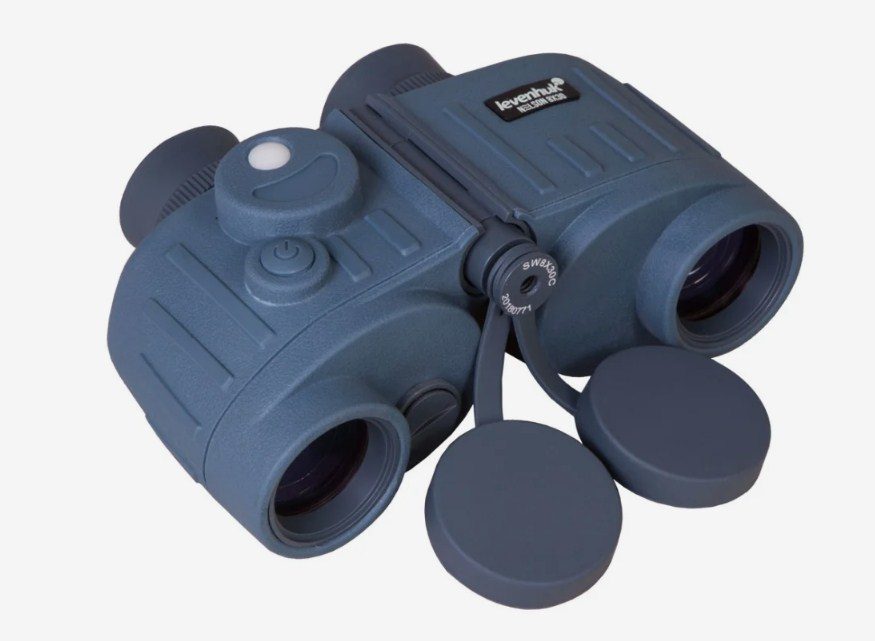
What characteristics to look for when choosing binoculars for anglers
As soon as the fisherman-hunter-tourist decides to purchase binoculars, he will be faced with various options, numbers and terminology that may mean nothing to him. “Hunting” for useful information on the Internet can be successful only if a person knows what to look for and what exactly he needs. So, the factors contributing to the choice of binoculars are as follows:
- Magnification . The X12 range is recommended for those who really want to focus on distant objects that are easy to find, such as skylines, large buildings. The higher the magnification, the darker the image. These are suitable for those fishermen who fish on large reservoirs, rivers, in the sea. So, next comes the X8 range. This range has more light, which means a stunning image on sunny days. The downside is that you won’t be able to see a target as big as binoculars with a higher magnification will. The X10 range implies medium magnification. Excellent magnification, lots of light and easier to find your target. This is the most popular solution for ordinary anglers in medium water areas.
- objective lens . This is the second number indicated on the binoculars. those. 10×42 – “42” means that the largest lens has a diameter of 42mm. Other examples: 28, 32 and 50 mm. The wider the lens, the more light enters the binoculars, which means better image clarity and detail in the shadows. The wider lens is great for dark environments such as dawn or dusk or overcast scenarios. A narrow lens is good for very bright conditions, i.e. at sea.
- Close focus . The lower the magnification, the closer the focus.
- Ergonomics . It is recommended to choose models with a rubber coating. They are ergonomically designed for comfortable use with wet hands.
- Other characteristics . Low dispersion glass is virtually scratch resistant. Waterproofing is essential for rain as well as occasional splashes. Anti-reflective coatings, light-reinforcing coatings, etc. are available. These are important features for binoculars for fishing purposes.
The fact that most people looking to buy binoculars are looking for the best deal is understandable. However, it is recommended to buy a device that will offer long-term use, the “cheap” options should be avoided.
So, what parameters are important for fishing binoculars
Many are wondering how to choose binoculars, this will help the advice of professionals.
How to choose digital binoculars for fishing and hunting with photo and video capture mode
Digital binoculars are a successful combination of binoculars and a camera. At the base of digital binoculars is a small camera mounted on the body. The camera has the same 8x magnification as the binoculars, so theoretically the image through the binoculars looks the same as the image on the camera. The numbers 8×30 and 8×42 on binoculars (including digital binoculars) represent the two most important parameters: the first number indicates magnification, i.e. how many times the image can be seen, and the second number indicates the diameter of the output lens (objective) in millimeters, with a larger number indicating a better image, but also depends on the physical characteristics of the binoculars, their size and weight. The abbreviation MP, which occurs in camera descriptions, stands for the prefix of megapixels (millions). It doesn’t matter how many megapixels – 2, 3 or 4, as it is often believed, if the magnification is 8x, then there is no significant difference in the image. Image quality is more influenced by other functionally relevant parameters such as lens quality and image settings (eg color balance, contrast, noise reduction). The LCD screen works like a regular camera, allowing you to review your shots and change settings for new shots. The main advantage of digital binoculars is that the LCD screen is double sided. noise suppression). The LCD screen works like a regular camera, allowing you to review your shots and change settings for new shots. The main advantage of digital binoculars is that the LCD screen is double sided. noise suppression). The LCD screen works like a regular camera, allowing you to review your shots and change settings for new shots. The main advantage of digital binoculars is that the LCD screen is double sided.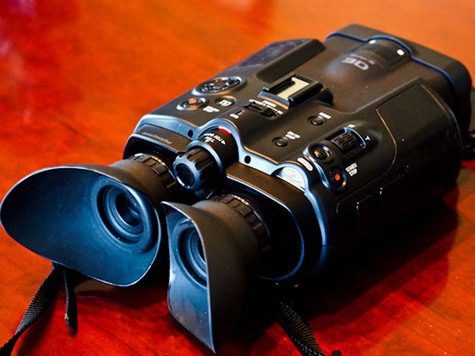
However, keep in mind that digital binoculars have a low magnification and do not have a backlight, so they are not suitable for shooting in the dark or at night.
Choosing binoculars for fishing: https://youtu.be/jmmj0QFvF8w
The best models of binoculars for fishing with a description – current offers for purchase in 2022
Top best models:
- Binoculars Levenhuk Karma PRO 12×50 . The model is designed for hunters, fishermen and nature lovers. Levenhuk Karma PRO 12×50 binoculars have a 50mm lens and 12x magnification. The field of view of the binoculars is 82 m at a distance of 1000 m. The binoculars are designed for hunters, fishermen and nature lovers. The optics of the telescope are made of BaK-4 glass roof prisms, and the lenses have an anti-reflective coating. The case is made of plastic and has a rubber coating to prevent moisture and dirt from entering. The inside of the body is filled with nitrogen to prevent fogging of the binoculars. Water resistant up to 30 minutes at a depth of 1 m. Weighs 1110 g.

- All-weather binoculars Canon 18×50 IS . These are high-performance all-weather binoculars with optical image stabilization from the Japanese company Canon. It features a 50mm lens, UD (Extra-Low Dispersion) lenses to reduce chromatic aberrations, and Super Spectra coating for bright, high-contrast, color-accurate images. The binoculars are designed with four lenses arranged in three groups.
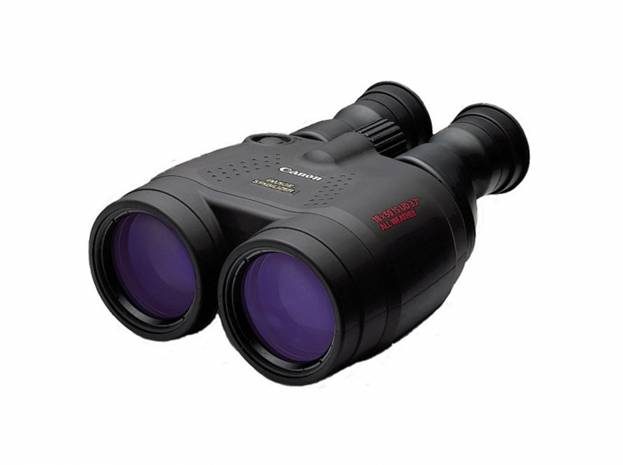
- Binoculars Nikon MONARCH 5 12×42 . The Japanese company Nikon has developed the MONARCH 5 12×42 binoculars for active users in low light conditions such as sunrise anglers, hunters and nature lovers. Nikon MONARCH 5 12×42 has a 42mm lens, high image brightness and a range of 1000m from 87m, providing a wide field of view. The binoculars have a magnification of 12x.

- Bresser Hunter 10×50 binoculars are designed for hunters, fishermen and nature lovers. The Bresser Hunter 10×50 binoculars provide crisp, bright images in low light conditions with 50mm lenses that provide a 119m field of view at 1000m. The binoculars have a 10x magnification.

- Veber Classic 20×50 binoculars are suitable for observing distant objects. You can hold it in your hands, but for long-term observations it is better to use a tripod. It is best to use a tripod with a handle that allows you to aim the binoculars at an object without touching it.

- Binoculars CANON 70×70 . This model is technically very reliable and is designed for observations and research in harsh natural conditions. Specifications: magnification 70x; lens diameter 70 mm; rubberized aluminum housing; comfortable ergonomics.

- Binoculars High Power . These high-performance 8x binoculars are specially designed for clear and comfortable viewing even in the harshest environments. Equipped with multi-coated low dispersion lenses to further improve image quality and prevent distortion and errors.

- Binoculars with digital camera Digital Camera Binoculars 12×32 . One of the best digital binoculars. The binoculars are very easy to use thanks to the small LCD screen, ergonomically located in the body. You can also connect the binoculars to a computer via USB to transfer the image to the screen. Optical zoom: 12x. Front lens diameter: 32mm. Minimum focal length: 8 m.

- Digital binoculars ATN BinoX-HD 4-16X . Multifunctional digital binoculars are designed for comfortable observation of nature, both day and night, with the possibility of simultaneous photo and video shooting of observed objects. The magnification of the binoculars smoothly changes from 4 to 16x. The advanced electronics of the ATN BinoX-HD binoculars allow for many custom functions that enhance its versatility.

- Sakura 20×50 are classic mid-range binoculars. The lenses have a special anti-reflective coating and a protective coating. Stylish and user-friendly design, as well as rubberized, dustproof and waterproof housing are additional advantages of this optical device.


